‘Oz’ as a Play: The Show’s Implicit Fight Against Strict Realism

Earlier this year, the television series Oz celebrated its 10th anniversary since ending its highly successful and groundbreaking run on HBO. It doesn’t always get the same respect that other HBO shows receive, though the caliber of the series isn’t any worse than, say, The Sopranos or The Wire or Game of Thrones. In fact, The Sopranos, a series many regard as the greatest of all time, likely wouldn’t have even made it to air if it weren’t for the risk taking and boundary pushing that Oz did within the televisual medium. So, in honor of its 10th anniversary, I’ve written this essay to revive knowledge of a magnificent series. I sometimes think that the show isn’t as highly accepted as others because people are viewing it as something it’s not. I argue that the show isn’t intentionally set up to be fully realistic, unlike its highly lauded contemporaries The Sopranos and The Wire, and that this causes people to think it an inferior show to the others mentioned. But by looking at the series as fighting against realism rather than for it by presenting itself as a not-so-obvious stage play, it opens up a new viewpoint and potentially opens up the mind to looking at the series in a new way and appreciating it more for what it does.
A camera rapidly zooms up to a closed, barred, typical jail door, and everyone behind it is still. As the camera gets closer, the door quickly opens and the action immediately starts. One new inmate in the Oswald Maximum Security Penitentiary (or Oz as it is called by everyone) is stabbed in the side and falls to the ground, and another new inmate stands up and yells in terror. The jail door acts as a stage curtain. Behind it, while closed, the actors quietly prepare, and as soon as it opens, the play begins. Thus begins our instantaneous introduction into how Oz is like a play. By associating itself with one of the most fictitious forms of media (i.e., the play), Oz intentionally sets itself up in a fight against strict realism in television, something Oz’s contemporaries, e.g., The Wire and The Sopranos, would be against since each series takes great strides to portray realism. While watching Oz, it is easy to think that the writers are attempting to create a series depicting prison life and its daily struggles (to put it very mildly) as realistically as possible to the viewer. But this is just surface level. Examining titles (both of the series and of episodes within the series), characters, and various choices Oz makes throughout the series, the issue of Oz being more of a play and less of a depiction of reality comes into focus, all the while combating critic opinions who may view this form of storytelling inferior to that of other dramatic series.
To begin the discussion of how Oz portrays itself as a play in order to break away from reality, we can first look at titles. There are a few titles at which I would like to look. The first title is that of the series itself, Oz. The title immediately conjures up thoughts of the classic 1939 film The Wizard of Oz. The Wizard of Oz in and of itself is like a form of musical theatre. It has also been adapted into several stage plays. So, in this sense, the title Oz immediately makes us think of plays and productions. But it also connects us to the lack of realism Oz is trying to perpetuate by setting itself up in this manner. The Wizard of Oz is not the go-to movie if realism is what one wants. It is a movie about a girl who has been transported “somewhere over the rainbow” to a whimsical land where people from the “real world” are now talking scarecrows, tinmen, and lions, and they try to help her get back home. Along her journey, she is captured and imprisoned by a wicked witch and flying monkeys because of the pair of magical shoes the girl is wearing that the wicked witch wishes to possess. Through Oz’s intentional association with The Wizard of Oz in title, it inevitably establishes its break from reality, setting in place a certain way to view the series as a whole.
Another title I want to mention is that of episode 4:1 of Oz. The title of this episode is “A Cock and Balls Story.” This title is clearly a play on the phrase “a cock and bull story.” According to the New Oxford American Dictionary, the official definition of “cock and bull story” is “a ridiculous and implausible story.” With the title of this episode, we clearly see that Oz is trying to make a clean break from reality without explicitly saying, “Hey, none of this is supposed to be real!” The title is a way for the creators and writers to call the whole thing “a ridiculous and implausible story.” The title of this episode is placed at an interesting point in the series. By being a title of an episode in season four, part one, it is equally flanked on one side by seasons one, two, and three, and on the other side by seasons four, part two, five and six. Having “A Cock and Balls Story” be the title of an episode several seasons into the series, it is a way for the series to tell viewers that everything prior and everything to come should not be take as real, or at face value.
The final title I would like to mention is that of episode 6:8, the series finale. The title of this episode is “Exeunt Omnes.” This title is the title that arguably establishes Oz as a play, and therefore its separation from reality, more than any other title, whether series title or episodic title, the show uses. The term “exeunt omnes” is a stage direction used in plays. According to the New Oxford American Dictionary, it is used to “indicate that all the actors leave the stage.” Not only does the title make direct reference to plays, but it also reminds the viewer that we have been watching actors act in a grand play this entire time, solidifying Oz’s fight against realism. As the series comes to a close, the actors have followed the stage direction given by the title. Everyone (prisoners, guards, staff, etc.) have all left the prison, and the Oswald Maximum Security Penitentiary that functioned as the stage for this elaborate play is now vacant bringing a close to the play that is Oz.
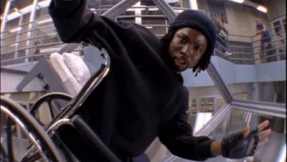 Apart from titles, another aspect of Oz that can be examined to see how the series is similar to a play is the presentation of characters. I will begin with the first character the audience sees, and that is Augustus Hill (played by Harold Perrineau). As the first episode of the series, “The Routine,” opens, Hill is talking directly to the audience. We are immediately met with a broken fourth wall. Because of the breaking of the fourth wall, we are instantaneously slapped across the face with the fact that Oz is not too concerned with portraying realism. The anti-realism is amped up when we discover that Hill not only is the narrator for the series, but he is also a regular character within the series who does not break the fourth wall. Having a character jump back and forth in this way is one of the most unrealistic things a series can choose to do. Throughout the entirety of the series, Hill appears to the audience in one of his fourth wall breaking scenes frequently in each episode, often in the middle of action. In terms of a play, he serves as an intermission break for the audience from the action. But Hill serves another important function besides simply breaking the fourth wall. His commentary to the audience is typically philosophical in one way or another and often conveys some form of a moral message. To describe him as Michele Malach describes him in her article “Oz” in the book The Essential HBO Reader, Hill serves as the chorus for Oz (54), which is a popular feature in many plays, including famous plays by William Shakespeare.
Apart from titles, another aspect of Oz that can be examined to see how the series is similar to a play is the presentation of characters. I will begin with the first character the audience sees, and that is Augustus Hill (played by Harold Perrineau). As the first episode of the series, “The Routine,” opens, Hill is talking directly to the audience. We are immediately met with a broken fourth wall. Because of the breaking of the fourth wall, we are instantaneously slapped across the face with the fact that Oz is not too concerned with portraying realism. The anti-realism is amped up when we discover that Hill not only is the narrator for the series, but he is also a regular character within the series who does not break the fourth wall. Having a character jump back and forth in this way is one of the most unrealistic things a series can choose to do. Throughout the entirety of the series, Hill appears to the audience in one of his fourth wall breaking scenes frequently in each episode, often in the middle of action. In terms of a play, he serves as an intermission break for the audience from the action. But Hill serves another important function besides simply breaking the fourth wall. His commentary to the audience is typically philosophical in one way or another and often conveys some form of a moral message. To describe him as Michele Malach describes him in her article “Oz” in the book The Essential HBO Reader, Hill serves as the chorus for Oz (54), which is a popular feature in many plays, including famous plays by William Shakespeare.
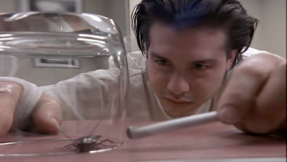 Dino Ortolani (played by Jon Seda) is another character that can be looked at to see how Oz functions as a play. In the first episode of the series, Ortolani is introduced to the audience as a main character. The length of the episode is approximately 56 minutes in runtime, and Ortolani is seen and/or heard for approximately 25 total minutes in the episode. This does not include time in which other characters are discussing him when he is not around. In previously mentioning Shakespeare, I will continue with that reference and say that Ortolani shows characteristics of Shakespearean tragic characters. In his tragedies, Shakespeare always has the main character occupy a significant portion of the play. But by the end of the play, the main character is dead. If we view each episode as a play in and of itself, then such is the case with Dino Ortolani. We understand him to be a main character, if not the main character, and by the end of the episode, he is dead, having been burned to death. Oz takes what the viewer thinks is reality (Ortolani being a main character, likely lasting for some form of duration of the series) and inverts that reality to make us understand that that is not the reality of how the series operates at all.
Dino Ortolani (played by Jon Seda) is another character that can be looked at to see how Oz functions as a play. In the first episode of the series, Ortolani is introduced to the audience as a main character. The length of the episode is approximately 56 minutes in runtime, and Ortolani is seen and/or heard for approximately 25 total minutes in the episode. This does not include time in which other characters are discussing him when he is not around. In previously mentioning Shakespeare, I will continue with that reference and say that Ortolani shows characteristics of Shakespearean tragic characters. In his tragedies, Shakespeare always has the main character occupy a significant portion of the play. But by the end of the play, the main character is dead. If we view each episode as a play in and of itself, then such is the case with Dino Ortolani. We understand him to be a main character, if not the main character, and by the end of the episode, he is dead, having been burned to death. Oz takes what the viewer thinks is reality (Ortolani being a main character, likely lasting for some form of duration of the series) and inverts that reality to make us understand that that is not the reality of how the series operates at all.
While titles and characters are important to look at and analyze, it is arguably the choices that a series makes within various episodes that begins to structure what a series is as a whole. For example, as I stated in the introduction, in 1:1 of Oz, “The Routine,” the jail doors we see at the beginning function much like curtains on a stage, which begins to lay the foundation for how Oz is a play. The series makes many other episodic choices in order to resemble a play and in doing so, each choice furthers Oz’s intent to distance itself from reality. There are four primary episodic choices I am going to discuss, one from season four, and the other three from season six.
In 4:1 of Oz, “A Cock and Balls Story,” there is one distinctive choice within this episode regarding a prop that stands out more than any other. If a person is in the audience at a stage play, then they will likely see props being used that would not normally be seen in any other visual medium. For example, if an actor on stage has to fly, then those in the audience will see the harness and wires that are allowing the actor to fly across the stage. There is no camera or technology magic that can be used to make wires invisible, like there would be on television or film. In this episode of Oz, the show decides to do something similar. There is a scene in this episode where Ryan O’Reily (played by Dean Winters) cuts his hand with a sharp knife. However, the tube that is producing the fake blood is quite visibly coming from his sleeve, allowing every viewer to see the source of the blood. There is no great effort to hide this prop. This is another way for Oz to fight against reality, by showing the viewers that the whole thing is fake.
I will now move to the three episodic choices from season six. The first is not from one specific episode. Rather, it is a choice used throughout the entire season. In season six, Oz still has Augustus Hill function as the narrator. The only problem with that? By the end of season five, Hill is dead. Now, Oz has decided to bring characters back from the dead. But it is not only Hill brought back to life. During one episode in season six, a handful of other characters are resurrected from the dead, including Dino Ortolani. Having characters return from the dead is one of the ultimate ways of shunning realism, forcing the audience to suspend disbelief.
The last two episodic choices I would like to discuss both come from the series finale of Oz, 6:8 “Exeunt Omnes.” The first of the two again involves the narrator, Augustus Hill. During this episode, we see Hill interrupt the action taking place within Oz on a multitude of occasions with his commentary. Every time he speaks to the audience in this episode, his commentaries all start with him saying, “Here’s a story, and it’s true…” He then proceeds to tell a story that is, yes, you guessed it, true. The reasoning for doing this is to perhaps make it somewhat more explicit that Oz is not trying to portray reality. Something specific happens in setting the episode up in this way. Reality (in the form of Hill’s stories) is being established by the most separate entity possible from the performance that is Oz. Everything that is real is separate from Oz, literally put in a box with Hill. Everything external from Hill and reality (i.e., the storyworld of Oz) is the opposite, the unrealistic.
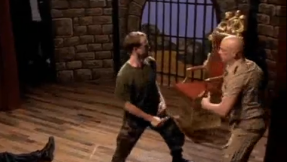 Finally, the last episode choice I would like to discuss also comes from 6:8 or Oz. In this episode, the inmates are putting on a production of a play, more specifically, Macbeth (making another connection to Shakespeare). It was crucial that Oz chose to have this play production during the series finale. The production of the play is a literalization of what the entire series has been. This is why it was important for the show to depict the play at this point in the series. By placing it in the last episode, it is able to be all encompassing, making sure that everything prior is literalized into the play form.
Finally, the last episode choice I would like to discuss also comes from 6:8 or Oz. In this episode, the inmates are putting on a production of a play, more specifically, Macbeth (making another connection to Shakespeare). It was crucial that Oz chose to have this play production during the series finale. The production of the play is a literalization of what the entire series has been. This is why it was important for the show to depict the play at this point in the series. By placing it in the last episode, it is able to be all encompassing, making sure that everything prior is literalized into the play form.
In his article “The Triumph of the Prime-Time Novel,” Charles McGrath lays out several ways in which prime-time series have become novelistic in their approach to storytelling. When juxtaposed with Oz, differences arise between the series and some of McGrath’s claims. This is to be expected, though, as Oz represents characteristics of a play and McGrath’s article focuses on dramatic series as novels. But there are some statements McGrath makes that seem rather troubling. He says,
“TV drama is also one of the few remaining art forms to continue the tradition of classic American realism, the realism of Dreiser and Hopper: the painstaking, almost literal examination of middle- and working-class lives in the conviction that truth resides less in ideas than in details closely observed. More than many novels, TV tells us how we live now” (244).
Oz is, of course, a TV drama, but it definitely does not depict realism. This statement can be read as somewhat excludable, Oz being on the excluding side. Despite this difference, it is a closing remark that McGrath makes that perhaps causes greater issue. When discussing a new show at the time of his writing, Murder One, he says,
“Murder One raises the awful possibility that TV, without our even knowing it, may already have passed through its golden age and be embarked upon a descent into self-consciousness and affectation” (252).
Oz shows qualities of both self-consciousness and affectation, and McGrath insinuating that that means it is not “good,” “quality,” or “golden age” television is troubling. This muddies McGrath’s otherwise decent argument. Oz was groundbreaking, critically acclaimed, and innovative in its style and choices, and provides a good counterpoint to McGrath’s somewhat careless word choice.
As a series, Oz decides to intentionally go in the opposite direction of reality. The series decides to take a creative approach in its fight against realism, and that is to represent itself, however implicit it may be at times, as a play. But though I have laid out several of the elements in which Oz is representative of a play, a certain question still remains: Why a play? To answer this question, it is important to remember that the reason Oz presents itself as a play is to distance itself from reality. Plays are arguably the most artificial medium. Things in a book can be real. Things in television and film can be real. Things on the radio can be real. Even if the subject of a play is supposed to be telling a real story, it can never be completely real because it is simply a reenactment of something that has previously happened. Everything about a play is a falsity—the actors, the props, the setting, etc. Thus, plays are the most artificial medium. In this lies why Oz chose to use the play form as its basis for separation from reality. It should be noted that Oz is definitely not the only television series to adapt another medium into its storytelling technique. For example, The Wire is highly novelistic in its approach, and The Sopranos is rather filmic in its production (both of these series being contemporaneous with Oz). But the primary difference is that Oz deviates from The Wire and The Sopranos in the sense that it does not make, nor does it want to make, realism a central focus. The Wire and The Sopranos do make realism a central focus, which is arguably why they adapt other forms of media that can have realistic elements.
As broad places within the series, I used season one, season four part one, and season six (all being equidistant from one another) as the seasons to build the argument on how Oz fights against realism by setting itself up as a play. More specifically, I used 1:1 (“The Routine”), 4:1 (“A Cock and Balls Story”), and 6:8 (“Exeunt Omnes”) as points of contact within the respective seasons to focus the argument more exactly. Throughout my examination, I gave a little more emphasis to season six, though, especially the series finale. This is because the finale (6:8), through use of the title which is a stage direction, the choice of the repetitive phrase in Hill’s commentaries, and the actual production of a play, all come together, more than any other elements in any other episode, to make clearer than ever that from beginning to end Oz has been itself a play. And the series used the medium of the play as its weapon in its fight against depicting strict realism on television, something on which Oz’s contemporaries put great emphasis. In breaking from reality, the viewers begin to understand that they do not have to try to rationalize the irrational, and instead Oz opens up an opportunity for the viewer to focus more on the human psyche of the characters, which is the true driving force behind all of Oz. With this analysis, I hope that I’ve presented a side to Oz that causes others to think about the series in a different, unique way and in turn better appreciate a great series that usually gets the shaft when discussed next to fellow HBO series of the time.
What do you think? Leave a comment.

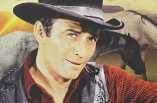
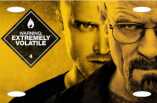

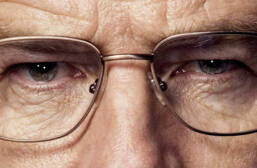


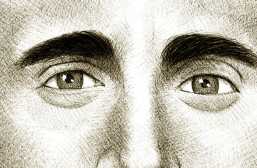

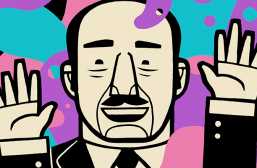
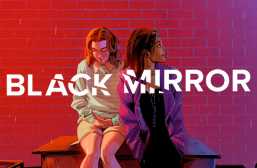
I loved this show, but looking back I found it silly how Schillinger was never able to kill Beecher despite being the head of The Aryan Brotherhood. Mayor Lowen telling off Vern in the last season of OZ was priceless since it was true.
In Oz, even gangs chose to work indiscriminate. If there was a way to get away with it, they would do it. The authorities had it on the books of trouble between Beecher and the Aryans. If they tried to move, the heat would be on.
In real prison, they kill you and they don’t care if they get caught (if I recall correctly, Oz had a few moments like that here and there).
It’s TV. That’s just the way it goes. Every TV show will never be 100% authentic, either for creative liberty or the lack of proper research by the people who make the show.
I must say, this was quite different from what I thought it would be. I tuned in thinking this was an adaptation of The Wizard of Oz, only to see a grim tale involving enforced man-love.
It did encourage me to stay on the straight and narrow and avoid jail, but I don’t commit crimes anyway. I don’t have the energy.
Note that I am joking.
Very nice article.
This is one of my all time favorite TV shows.
I have seen The Wire and Breaking Bad. I like both of those shows more than this show.
However those characters, specifically the villains did not affect me more than Schillinger did.
Gus can act like a big honcho, kill Pinkman’s girlfriends dumb kid, threaten Walter’s family like a big man but not affect me the way Schillinger did.
Stringer Bell also ordered a senseless death in Wallace but come on now, Marlo was the main antagonist on that show.
Schillinger befriended a normal guy for no reason other than to humiliate him and make him his prag.
Maybe he affected me more because he seems more realistic. Gus Fring is a comic book character while Stringer Bell maybe would do that to a corner kid. But if I went to prison there probably is a huge fuqer like Schillinger.
And also, how he killed Beecher’s kid will never be topped by anything those two villains did. I think he out acted those two as a bad mofo.
However, his character in season 6 was a bit lame. Starting from his death to making weird alliances-protection vows. They made him seem like a bit of a loser. Gus and Stringer definitely had better endings.
Anyway, what am I talking about, I need to go to sleep.
Did enjoy reading this, thanks. Oz is one of the greatest. It has a great cast of character actors, solid writing and loads of twists and turns that make it enjoyable all the way up to the last season. Ithink it was also the first shot to set “it’s cable and we can do whatever we want” mold that HBO has been following ever since, so in some ways it was an incredibly groundbreaking show and paved the way for most of the other shows that we worship today.
I kind of danced around this article to avoid spoilers, but I love this idea! I think it’s fascinating that one of the tenets of this new wave of “quality television” is a sense of “realism”, usually achieved by cursing, sexuality, nudity, graphic violence, and other “everyday” things. It’s definitely the bread and butter of premium channels like HBO and Showtime, both of which use their freedom of content as a strategy to acquire subscriptions. Ironically, I think that even shows like The Sopranos and The Wire, which are clearly meant to be taken as “the way things really are”, have a highly theatrical quality to them. It’s always funny to hear the “Shakespearean dialogue” argument alongside the “realism” one, as they seem to contradict each other. Regardless, my sister’s borderline obsessed with Oz and I can’t wait to check it out!
Thanks! I strongly recommend the show. Sure, there’s cursing and sex and graphic violence and graphic nudity (I seriously think there isn’t one part of Chris Meloni you don’t see naked–he left nothing to the imagination), but whereas many other shows rely heavily on that stuff for their main purpose, I honestly believe that isn’t what ‘Oz’ is about. Yeah, that stuff factors greatly into the show, but at the heart of the series is legitimate truth, reason, and understanding about life and culture outside of what we may know and think. It’s just presented differently than the way other shows may present it. All in all, one of my favorite series.
Thanks for recommending this show! I hadn’t heard of it before now, but I think I’ll give it a watch.
I absolutely loved Oz, and I especially like the idea that the show deliberately breaks away from realism. How “real” can a show about prison be, after all?
It’s an interesting perspective, however, to think about a television such functioning as a play with the intent of skirting that realism. It’s not an idea that would come readily to the viewer.
I love your premise; it never occurred to me that “Oz” could be one big production. I’m in the middle of season four and addicted, but some situations were so absurd to me they were almost funny. It’s a shame this series doesn’t get the recognition it deserves.
This article was excellent! It explained to me why I continued to watch a show that most of my friends and peers found repellent. The characters and relationships depicted in this prison were a metaphor for the drama of life. Something Shakespeare understood. The basic drives and feelings we all struggle with, hate, love, anger, loneliness, fear etc. Anyone familiar with Carl Jung would recognize the shadow figures of ourselves, our basest instincts, thrown up on the screen and portrayed in the “prisoners”. What stuck me was the running theme of religion and spirituality, fight against good and evil, trials of Job, forgiveness. Realism was not needed here to make me feel for the characters and situations. Although we know this is not real it makes us feel and that is the whole purpose. Although violent, it is not senseless (to coin Ausustus). Studies show that the most harmful part of violence on tv is when the characters are faceless and nameless and you don’t see the effects, like a video game.
This definitely has a non-realism concept.